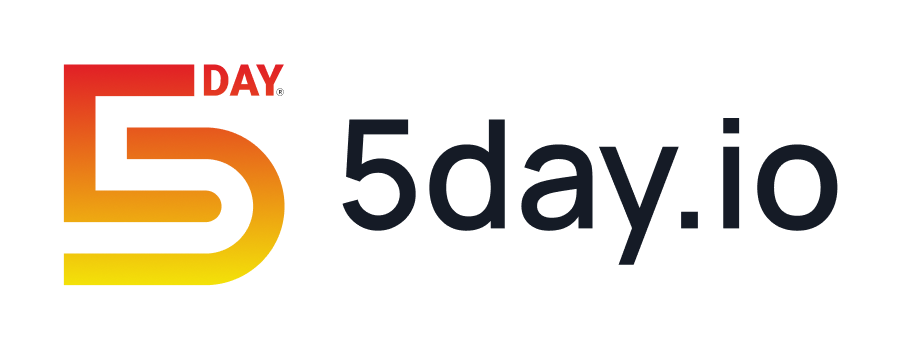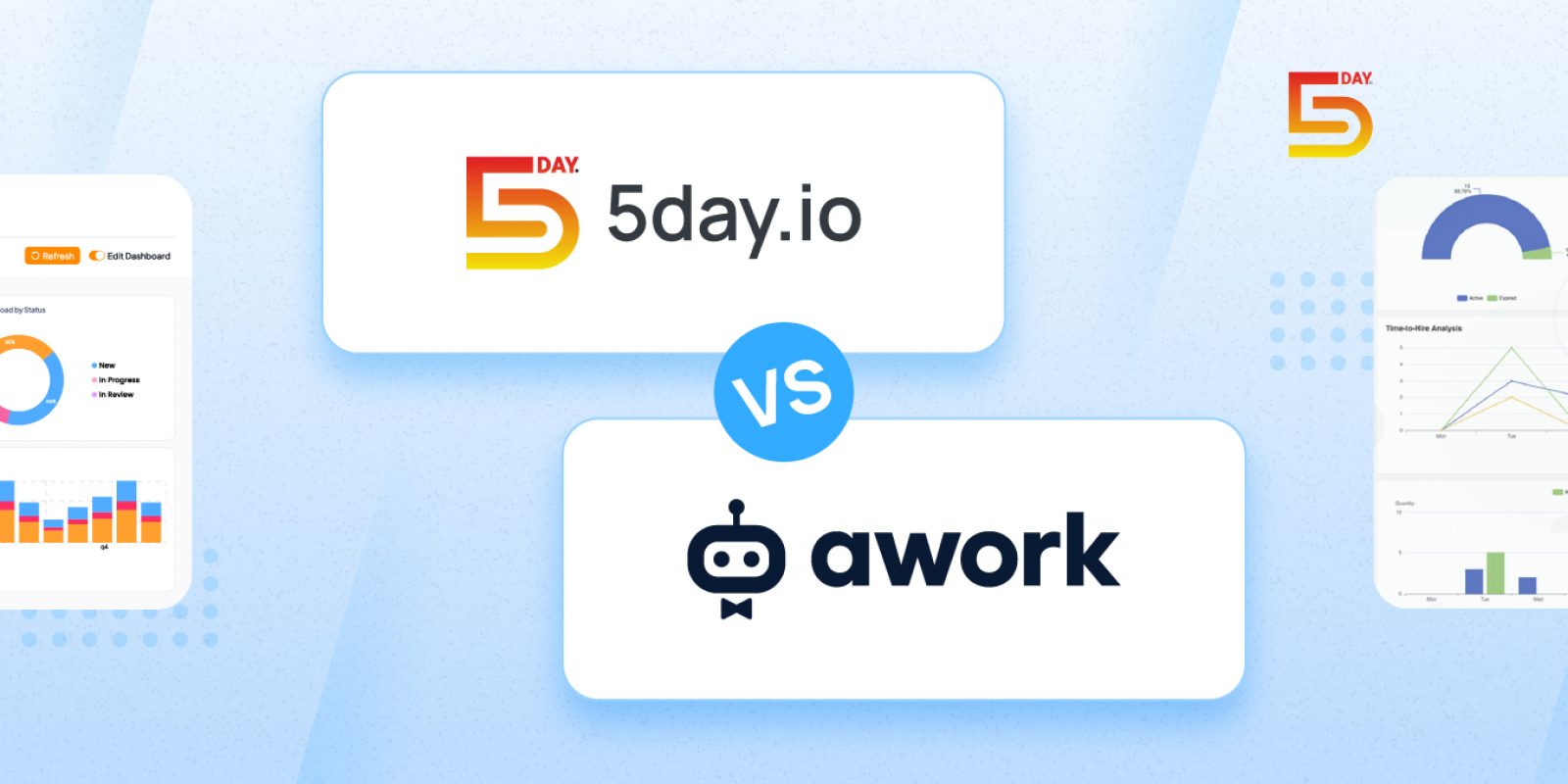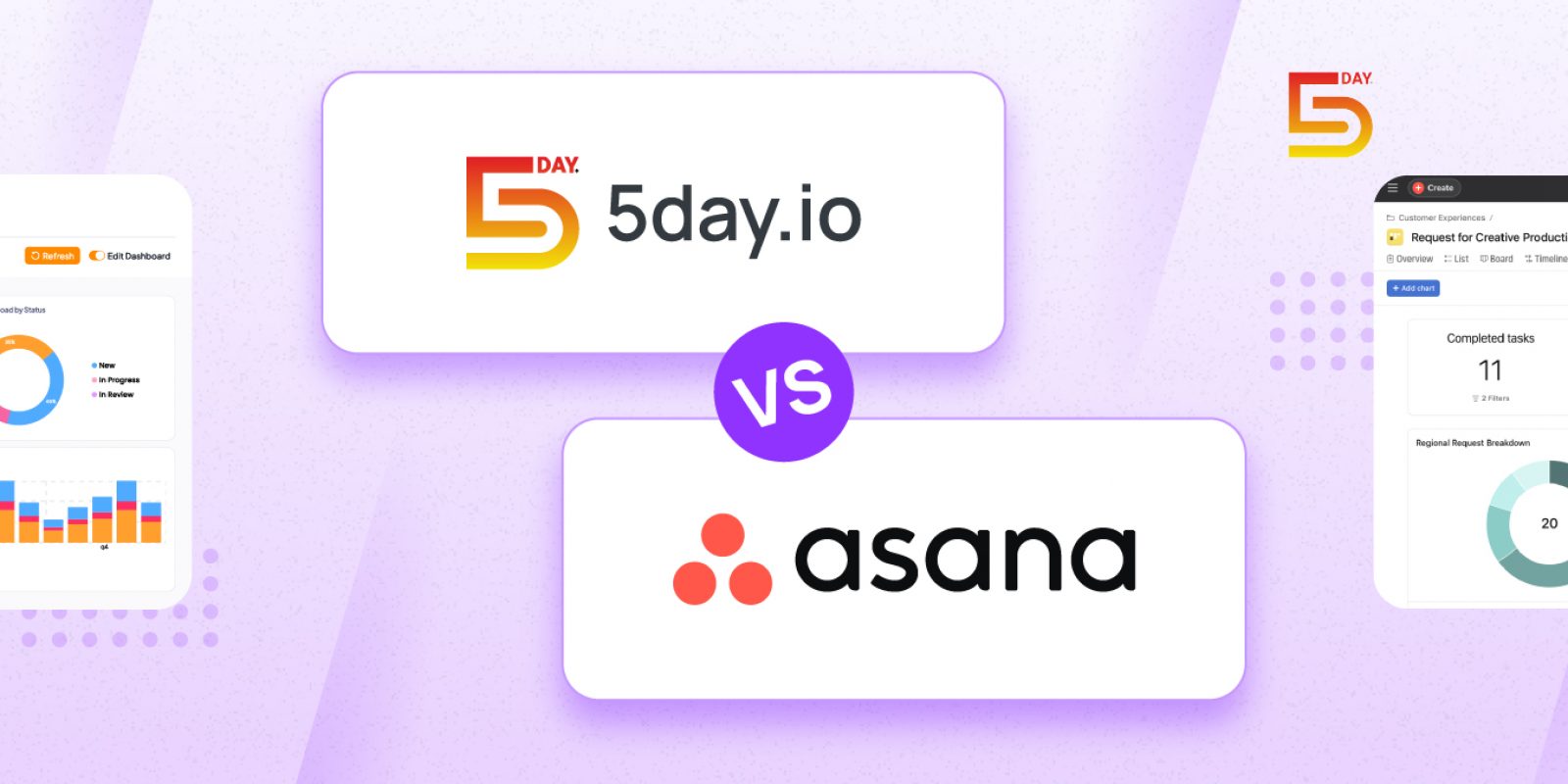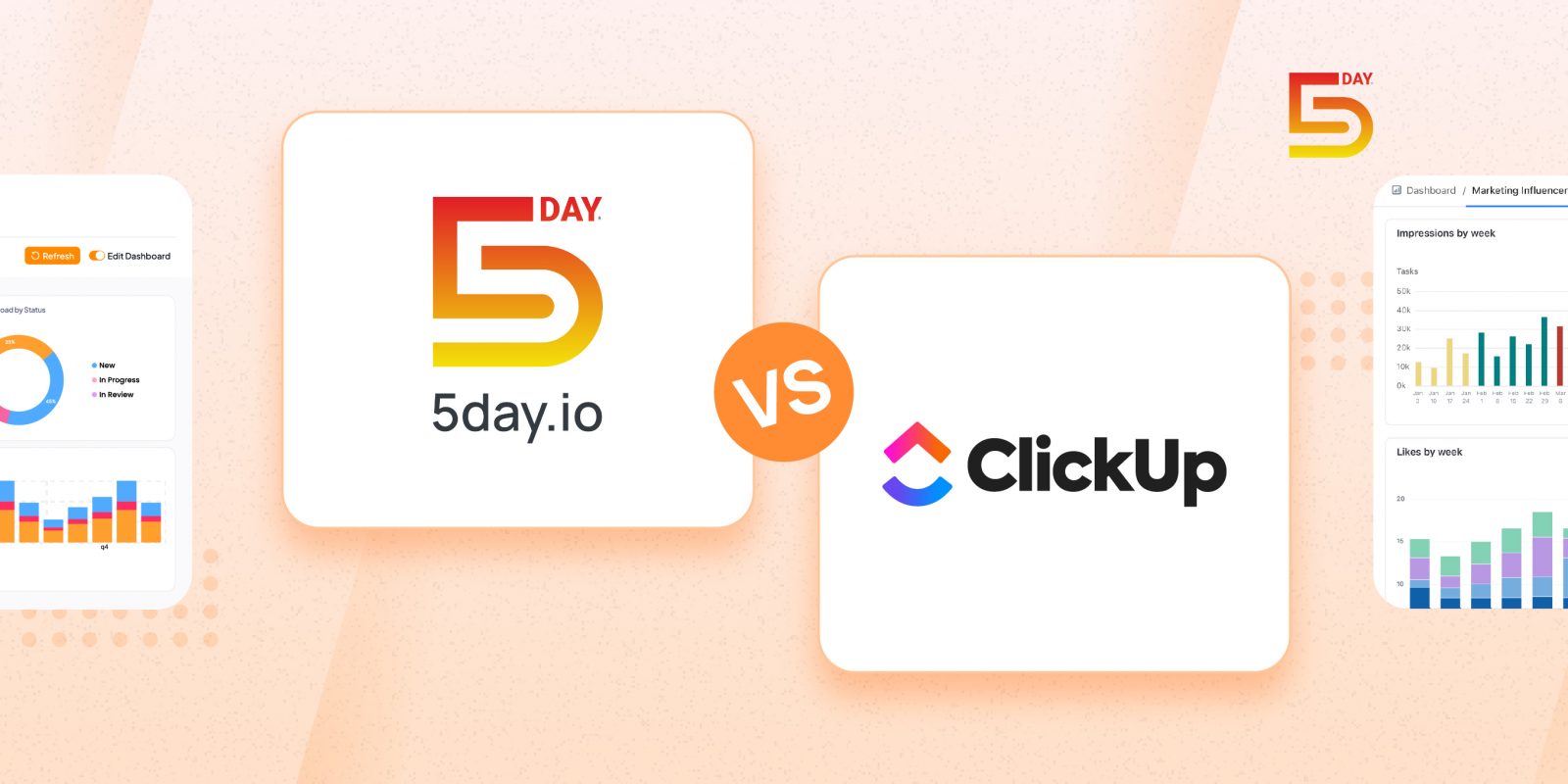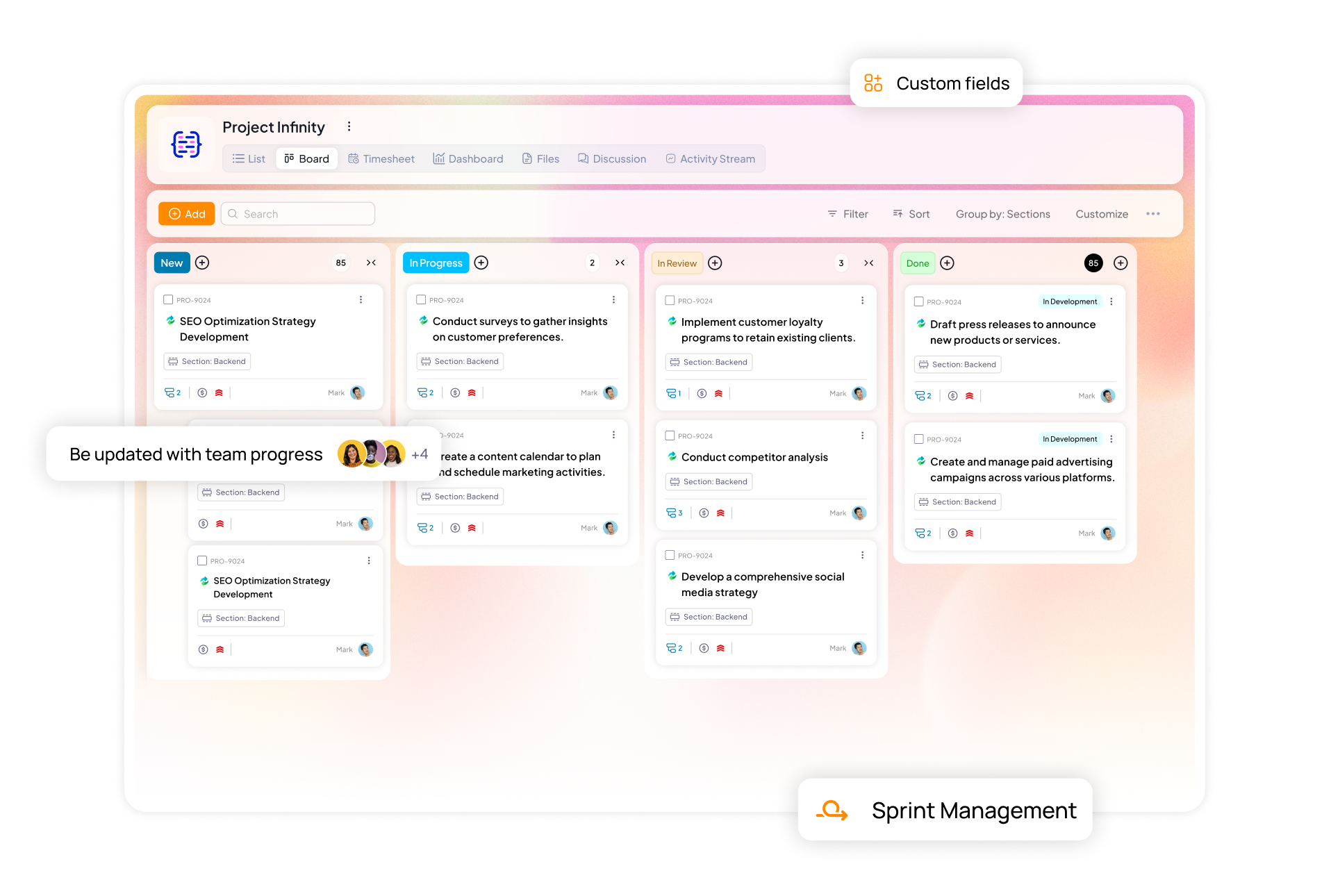Ever wondered why most projects miss their mark? According to the PM World Journal, 37% of projects fail because of unclear goals. Often, this happens due to undefined project deliverables.
Vague outputs can throw budgets and timelines off, impacting the project as well as team morale. That’s why knowing exactly what you’ll produce (and when) should always be a priority.
Clear, specific project deliverables in project management are the backbone of on-time, on-budget success.
In this article, you’ll find how defining and owning your deliverables stops scope creep and transforms guesswork into a clear-cut roadmap. Let’s begin with finding an answer to ‘what is a project deliverable in project management?’
What are project deliverables?
Deliverables include different outputs delivered during the scope of the entire project.
The term itself may indicate that it means final outputs submitted at the end of the project. But it’s not just that.
Those are unique, verifiable outputs that a project must produce to meet objectives.
Project deliverables can range from finished outputs like a software application to detailed documents, such as plans and manuals.
In the early project planning stage, stakeholders agree on the deliverables to set expectations and allocate resources. Teams should consider these project management deliverables their source of truth. That’s why it’s essential to document them in the project charter so everyone stays aligned from day one.
Types of project deliverables
Deliverables fall into two main buckets—internal and external. But many other types of project deliverables play different roles in moving the project forward. Let’s find out more about each deliverable type one by one:
Internal deliverables
Internal deliverables are documents, plans, and progress reports used within an organization and not shared with the clients. These deliverables help teams stay on track and work collaboratively without missing any detail.
External deliverables
As the name suggests, external deliverables are the user training manual or final products submitted to the stakeholders. These stakeholders are outside your agency, most likely an investor or client.
Process deliverables
Documents that keep the project moving come under process deliverables. These outputs support how the work gets done rather than what’s ultimately delivered to the client.
Think prototypes, test plans, meeting notes, or status reports. Anything that helps the team execute the project efficiently and stay aligned is a process deliverable.
Product deliverables
Product deliverables are what the client or end user ultimately receives. These are the final goods or services your project is aiming to produce. It could be a completed website, a training manual, a mobile app, or a marketing campaign.
Tangible deliverables
Tangible deliverables are physical, measurable outputs you can see or touch. These often include hardware, equipment, printed manuals, or physical products.
These deliverables are easy to verify because their physical nature, making them straightforward to follow.
Intangible deliverables
Similarly, intangible deliverables are outcomes you can’t hold, but they still serve a major purpose. These can include new business processes, a workflow update, or improved customer support. While they’re not physical, they directly impact performance and efficiency.
Digital deliverables
Digital deliverables are online or technology-driven outputs created during the project. It could be a website, mobile app, slide decks, software updates, or digital prototypes.
Note that these types often overlap. For example, a digital deliverable can also be a product deliverable. A process deliverable can be both an internal and an external deliverable.
How to identify project deliverables
Project management largely relies on how teams define and achieve project deliverables. Many teams rush into creating a project plan without a clear list of what ‘done’ means. Mostly, because keeping track of these deliverables isn’t easy.
This results in missed deadlines and weeks of rework.
A few extra steps to determine the project deliverables could bring clarity and save hours. Here’s how to identify project deliverables to get specific results:
Define a clear project scope and objectives
Start with a well-defined scope and measurable goals to identify clear deliverables. Clear scope helps understand what’s included and what’s not, setting boundaries. On the other hand, objectives help create a roadmap for what the project aims to achieve.
Ensure these objectives are Specific, Measurable, Achievable, Relevant, and Time-bound (SMART). Having SMART goals helps you know how close or far you are from achieving them. Tie each deliverable to these objectives, reconsider their place on the list if they don’t.
Ask the right questions
Questions help clarify the purpose of the project and possible expectations. They create a strong foundation to identify deliverables at a later stage.
Think of the bigger picture and ask questions like:
- What results do stakeholders want?
- What specific outputs are needed to match those expectations?
- How important are the deliverables to overall project success?
- What resources will you require?
- What deadlines are essential to reach project objectives?
Gather and analyze the requirements
Engage stakeholders (clients, end-users, internal teams) to gather detailed requirements. Use interviews, workshops, and surveys to understand their needs and expectations.
Well-defined requirements set clear criteria for what makes a deliverable acceptable, reducing the risk of revisions and scope changes. Bringing everyone involved on the same page minimizes missed dependencies later on.
Break down the work (Work Breakdown Structure)
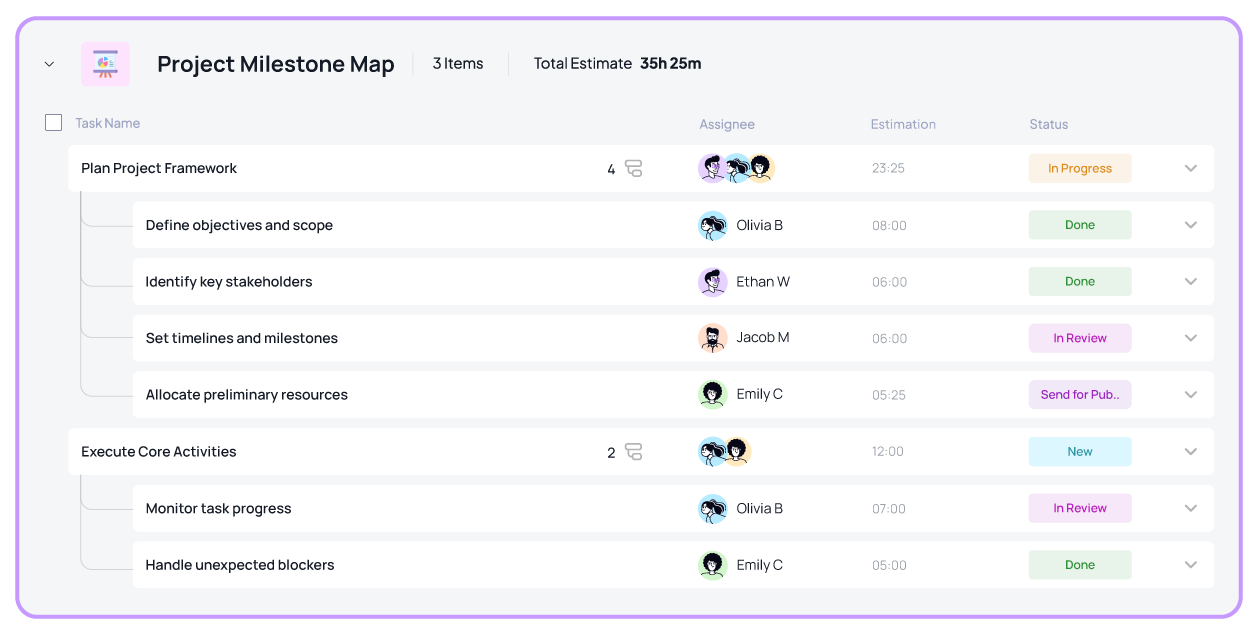
Use a Work Breakdown Structure (WBS) to divide the project into manageable tasks and phases. Each of these tasks should create a specific, measurable output (deliverable) that directly contributes to the project’s objectives.
Group tasks by project phase (initiation, planning, execution, control, closeout) and identify the deliverables mapped to each stage.
Establish acceptance criteria and KPIs
For all project deliverables in project management, define clear acceptance criteria and key performance indicators (KPIs). This way, it’s easy to measure quality, timeliness, and whether it aligns with the requirements. Every team would want these deliverables to meet expectations.
Tips to manage deliverables in project management
Managing deliverables isn’t just about staying busy—it’s about staying sharp. When your team knows what’s due, who’s on it, and how to keep things moving, projects run smoother and finish stronger. Here are some tips to manage how to make that happen.
Use project management tools to track deliverables
If your team can’t see it, they won’t be able to move the needle further. A great project management tool helps you assign, track, and adjust deliverables in real time.
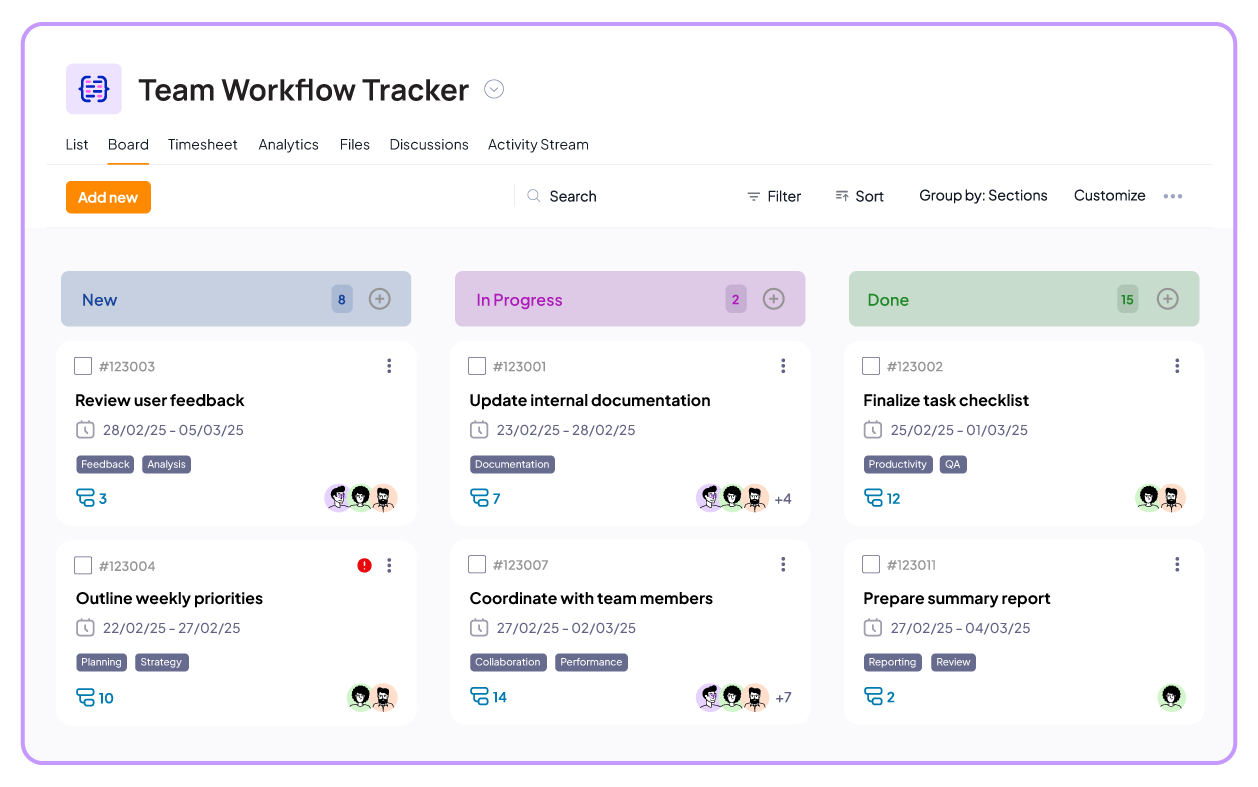
This allows teams to draft content or a working prototype. Further, seeing where things stand at a glance keeps teams accountable. With 5day.io project management software, you can switch views—from Kanban to List. This helps every deliverable stay front and center, no matter how your team works.
Break deadlines into check-ins
Smaller wins keep the progress steady. With project milestones, divide the work into clear phases.
Instead of one big, looming deadline, create mini check-ins tied to project milestones. These checkpoints act as timely pauses, giving your team space for managing timelines before things veer off. Set clear and realistic deadlines that keep your team focused and meet quality standards.
Assign ownership
Assign a clear owner for the task to avoid any confusion. Consider the workload, the person’s expertise, and availability before assigning any work.
Choose responsible people who are answerable for seeing it through, not just checking boxes. Select the right project management software, like 5day.io, that makes assigning ownership simple and visible, so tasks don’t get dropped in the shuffle.
Keep an eye on progress
Tracking helps you find blockers before they become problems. You don’t need to breathe down your team’s neck, but tracking progress can help manage dependencies and keep everyone in loop.
Use built-in reporting features or simple status updates to keep an eye on the overall project. When deliverables are tied to a visible progress tracker, it’s easier to keep everyone moving in the same direction.
Set clear guidelines for communication
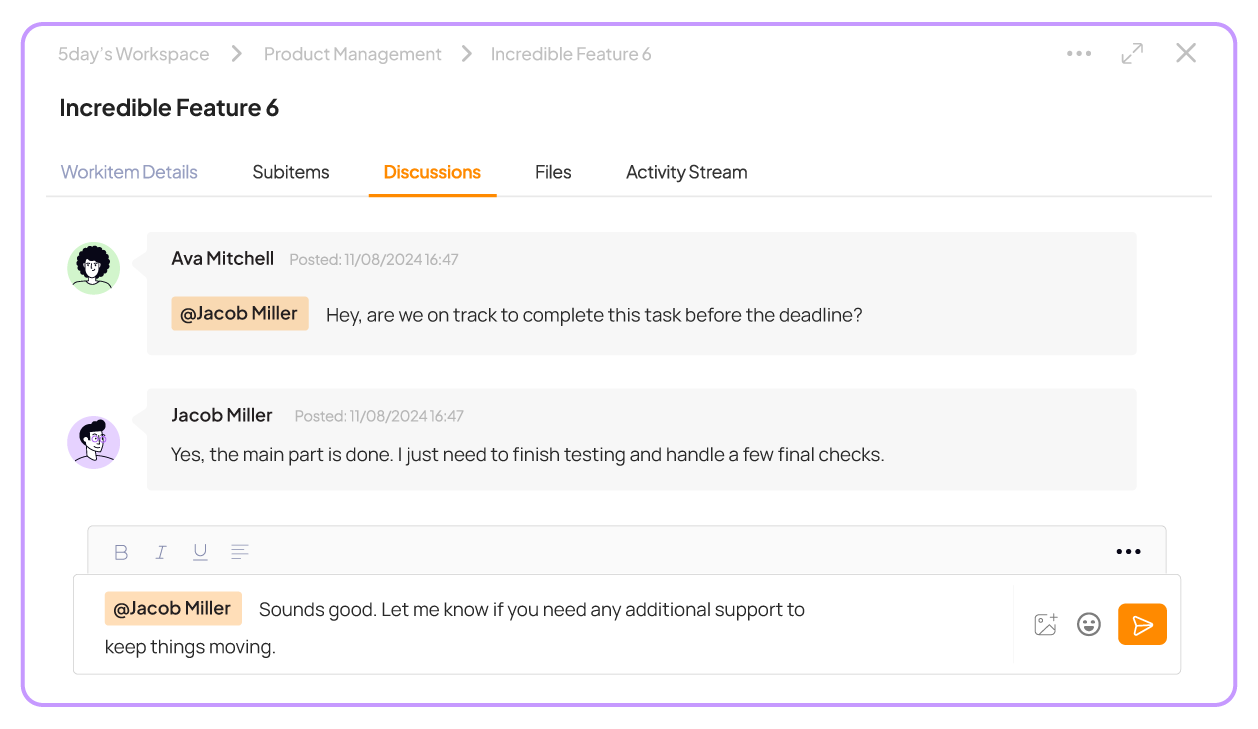
Share updates early and often, considering that working on deliverables is teamwork. Don’t save surprises for the end. A weekly sync update can save hours of rework.
Document key decisions and tag stakeholders when deliverables shift. With built-in comments and notifications, 5day.io project management software makes it easy to align everyone.
Examples of project deliverables
Following the above tips, you can effectively manage deliverables. Let’s explore a few project deliverables examples in project management to understand what these looks like in practice.
Website development project
From kick-off to launch, every phase of the website development project has the following deliverables.
Project phases | Key deliverables |
Initiation |
|
Planning |
|
Execution |
|
Monitor and Control |
|
Closure |
|
Marketing campaign project
The following table covers the deliverables you’ll produce for a marketing campaign project.
Project Phase | Key Deliverables |
Initiation |
|
Planning |
|
Execution |
|
Monitor and control |
|
Closure |
|
Start tracking your deliverables with 5day.io
Mastering project deliverables is about knowing what you’re delivering, who it’s for, and how you’ll measure success. When you’re clear on deliverables, your whole team runs smoother and your project is far more likely to finish on time.
With 5day.io, start planning using industry-specific templates. It offers 45+ ready-to-use templates for IT, marketing, sales and more, so you can define deliverables in minutes.
It allows you to switch effortlessly between List and Kanban views to see deliverables in context. Further, 5day.io makes it easy to track deliverable status with customizable widgets.
Ready to turn deliverable chaos into clarity? Sign up for 5day.io’s free 30 days free plan and see how our minimalist, AI-powered platform keeps your outputs on track.
The best part? No credit card required for sign-up.
Frequently Asked Questions
What issues do teams face with project deliverables?
Unclear project deliverables lead to chaos and missed deadlines. Some of the bigger challenges due to vague deliverables include:
- Scope creep: The Team never understands exactly what “done” means
- Quality lags: Unclear requirements and a lack of quality assurance practices can lead to subpar deliverables
- No accountability: Teams not taking responsibility can compromise the project’s scope and make it challenging to meet deliverables.
Is it normal for project deliverables to evolve during a project?
Yes, project deliverables often change, especially in agile or evolving projects due to new priorities, or constraints. But changes should be controlled and approved. Making those changes without documenting them or informing the team can risk the project.
To manage it well, use a change control process to record the request and get stakeholder sign-off. Project management software like 5day.io helps teams track every change and avoid scope creep surprises.
How are project deliverables different from milestones?
Project deliverables are tangible or intangible outputs, like reports, prototypes, or final products. On the other hand, milestones mark key points in time, like the end of a project phase or a major approval.
Another thing is that teams produce project deliverables while they aim to achieve milestones. For example, submitting a design draft is a deliverable, while “design phase done” is a milestone. In short, deliverables are the what, and milestones are the when in project management.
Why are project deliverables so important?
Clear deliverables mean clear outcomes. For this reason, they define a project’s success and keep teams, timelines, and expectations on track.
They serve as proof that work is moving forward and that each phase is hitting its goals. Deliverables also help stakeholders understand what they’re getting and when. All these things make performance measurable. Without them, you risk unclear goals and missed deadlines.
